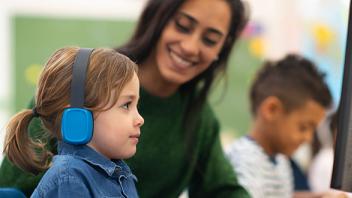Along with new smiling faces, a new school year brings special education teachers new IEPs, new co-teaching arrangements, new assessments to give, and more. In order to help you be as effective as you can with your new students, we’ve put together our top 10 list of back-to-school tips that we hope will make managing your special education program a little easier.
Download this article as a PDF document .
1. Organize all that paperwork
Special educators handle lots of paperwork and documentation throughout the year. Try to set up two separate folders or binders for each child on your case load: one for keeping track of student work and assessment data and the other for keeping track of all other special education documentation.
2. Start a communication log
Keeping track of all phone calls, e-mails, notes home, meetings, and conferences is important. Create a “communication log” for yourself in a notebook that is easily accessible. Be sure to note the dates, times, and nature of the communications you have.
3. Review your students’ IEPs
The IEP is the cornerstone of every child’s educational program, so it’s important that you have a clear understanding of each IEP you’re responsible for. Make sure all IEPs are in compliance (e.g., all signatures are there and dates are aligned). Note any upcoming IEP meetings, reevaluations, or other key dates, and mark your calendar now. Most importantly, get a feel for where your students are and what they need by carefully reviewing the present levels of performance, services, and modifications in the IEP.
4. Establish a daily schedule for you and your students
Whether you’re a resource teacher or self-contained teacher, it’s important to establish your daily schedule. Be sure to consider the service hours required for each of your students, any related services, and co-teaching. Check your schedule against the IEPs to make sure that all services are met. And keep in mind that this schedule will most likely change during the year!
5. Call your students’ families
Take the time to introduce yourself with a brief phone call before school starts. You’ll be working with these students and their families for at least the next school year, and a simple “hello” from their future teacher can ease some of the back-to-school jitters!
6. Touch base with related service providers
It’s important to contact the related service providers — occupational therapists, physical therapists, speech/language therapists, or counselors — in your school as soon as possible to establish a schedule of times for your students who need these services. The earlier you touch base, the more likely you’ll be able to find times that work for everyone.
7. Meet with your general education co-teachers
Communicating with your general education co-teachers will be important throughout the year, so get a head start on establishing this important relationship now! Share all of the information you can about schedules, students, and IEP services so that you’re ready to start the year.
8. Keep everyone informed
All additional school staff such as assistants and specialists who will be working with your students need to be aware of their needs and their IEPs before school starts. Organize a way to keep track of who has read through the IEPs, and be sure to update your colleagues if the IEPs change during the school year.
9. Plan your B.O.Y. assessments
As soon as school starts, teachers start conducting their beginning of the year (B.O.Y.) assessments. Assessment data is used to update IEPs — and to shape your instruction — so it’s important to keep track of which students need which assessments. Get started by making a checklist of student names, required assessments, and a space for scores. This will help you stay organized and keep track of data once testing begins.
10. Start and stay positive
As a special educator, you’ll have lots of responsibilities this year, and it may seem overwhelming at times. If your focus is on the needs of your students and their success, you’ll stay motivated and find ways to make everything happen. Being positive, flexible, and organized from the start will help you and your students have a successful year.
For more information about starting the year off right, please visit LD OnLine’s back to school section.
